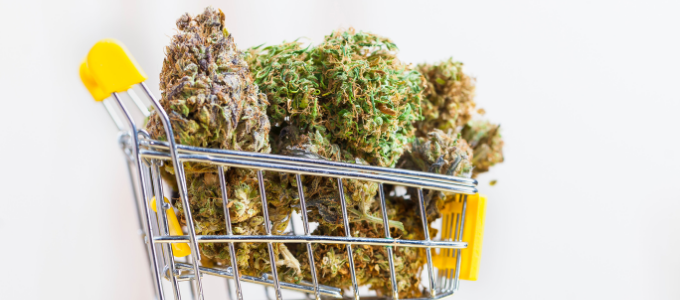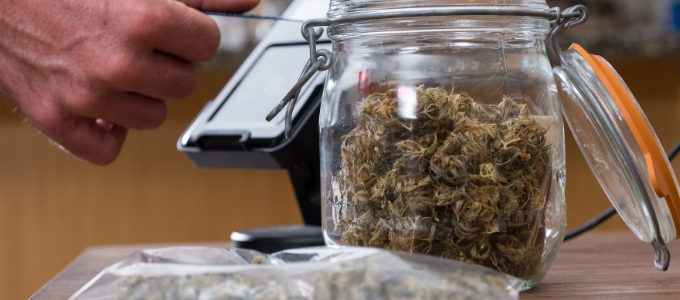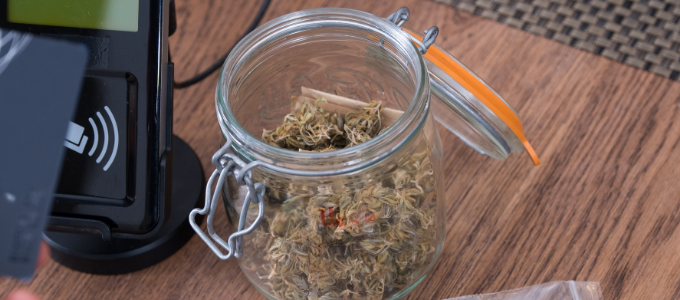
Colorado was one of the first states to legalize the use of recreational marijuana in 2012. Since then, the state has been a frontrunner in the fight for legalization and paved the way for many other states to legalize.
One of the big arguments for the legalization of recreational use was the insane amount of revenue and tax money weed could bring in on a statewide level. People felt that there was money to be made and no harm to be done.
Turns out they were right.

Since 2014, Colorado has brought in over 9.9 billion dollars in revenue according to the Colorado Department of Commerce. The revenue has had steady growth over the last six years with little signs that it will slow down.
The sale of medical marijuana has remained relatively steady, with little ups and downs, but recreational sales have skyrocketed.
In 2014, Colorado recorded about 680 million dollars in revenue from marijuana. In the six years since then, the revenue has multiplied by over fourteen times.
As expected, the money in taxes the state has made from marijuana far outweighs any of the alleged negative effects. Since legalization, the Colorado government has pulled in roughly 1.6 billion dollars in taxes on marijuana.
2020 has been a hard year for everyone. There’s no one that’s gone unaffected by the pandemic. The last year changed the world.
As you would expect, it also changed the marijuana industry.
In 2020, Colorado recorded almost 2.2 billion dollars in marijuana sales. This broke the record from the previous year by about 450 million dollars.
The highest revenue was recorded in July, with over 220 million dollars in total marijuana sales. Colorado has come a long way since legalization. The total revenue for the entire year of 2014 was roughly three times that of July 2020.
It was reported by Marijuana Moment that Colorado pulled about 390 million dollars from taxes on marijuana in 2020.

It’s hard to nail down exactly why marijuana sales spiked rapidly last year. There are likely many factors that contributed to increased revenue. Some examples could be:
· More people wanted a way to de-stress after the pandemic hit.
· The general public’s ever-changing perception of the marijuana industry.
· First-time users feeling comfortable trying marijuana after time has passed.
· An increase in marijuana use in popular media.
· Some have started to see marijuana as an alternative to alcohol.
The most likely answer is that all these aspects and more contributed to revenue growth. 2020 might have provided the perfect storm of timing, circumstance, and availability to expand the marijuana market.
The pandemic affected people in a variety of ways. A common thought is that many turned to marijuana as a de-stressor, and the numbers back that up.
It’s likely that the impending fear of a lockdown drove many consumers to stock up and buy more. The process of buying retail and medicinal marijuana also became easier, as dispensaries would offer curb-side and online ordering.
The Colorado Sun reported that the national marijuana market grew by about 45 percent in 2020, bringing total revenue up to about 18 billion dollars.
It’s safe to say that the Covid-19 pandemic played a significant role in the uptick in marijuana sales.
Even as recent as ten years ago, a sizeable portion of the general public had a negative perception of marijuana. Though there will always be those who are against the growing and consuming of weed, the numbers continue to dwindle.
More and more people are finding that, simply, weed isn’t bad. The public perception of the plant is changing by the year. Marijuana use has become more accepted across almost all societal groups, and therefore more people are willing to give it a shot.
The most likely outcome of this is the continued growth in revenue via continued growth in legalization and use.

“Time is money.” – Benjamin Franklin
In this case, time may have led to money. Over the last several years, marijuana revenue has increased exponentially. One reason could be that people feel safer buying retail marijuana now that a significant amount of time has passed.
Consider this:
A substance that you were told not to use by anti-drug programs in elementary school suddenly becomes legal. You were a good student, so you listened to the dangers. But now the government has readily made that substance available, and that conflicts with what you were taught. As the years go by, nothing negative comes from the legalization of marijuana, and you feel as though the dangers you were warned about weren’t completely true.
It could simply be that eight years since legalization (coupled with the stress from the pandemic) was enough time for more consumers to try smoking weed.
Consuming marijuana has been present in the media for decades. But over the course of the last couple, that seems to have spiked. Many celebrities endorse the use of marijuana. Some have even started their own weed-based companies.
The effects of marijuana in media have, in the past, been often dishonest and portrayed somewhat negatively. More recently, marijuana use has been portrayed as more fun, light-hearted, and widespread. This almost undoubtedly shapes the public perception.
People look up to celebrities. They look up to their favorite characters in movies and television. If marijuana use in the media continues to grow, it’s likely that marijuana revenue will as well.
Many people have found that alcohol can be destructive. According to the National Institute on Alcohol Abuse and Alcoholism, it’s estimated that about 95,000 people die from alcohol-related causes per year.
Many people have found that marijuana is an acceptable, if not preferable, alternative to alcohol. It produces similar, but wildly different effects on the human brain.
Marijuana poses little-to-no threat when compared to alcohol. This, combined with the need for stress relief during the pandemic, likely contributed to the overall increase in revenue.
There are presumably many other factors that assisted this year’s marijuana revenue growth in Colorado. Check back in after 2021 to see if revenue continued to grow and if any determining factors were found.


![(0.11g) Fruit Trio | Tarts | [113.63mg] (0.11g) Fruit Trio | Tarts | [113.63mg]](/rails/active_storage/representations/proxy/eyJfcmFpbHMiOnsiZGF0YSI6MTE2OTQ0LCJwdXIiOiJibG9iX2lkIn19--fd286553dc19f428e5c4970436e1efd093e3deaf/eyJfcmFpbHMiOnsiZGF0YSI6eyJmb3JtYXQiOiJwbmciLCJyZXNpemUiOiI0NjIgeCAzMTUiLCJjb252ZXJ0Ijoid2VicCJ9LCJwdXIiOiJ2YXJpYXRpb24ifX0=--d7c54d32abcb6ca24ad06932a0e70673da4d7d48/products_missing_image_cs.png)

